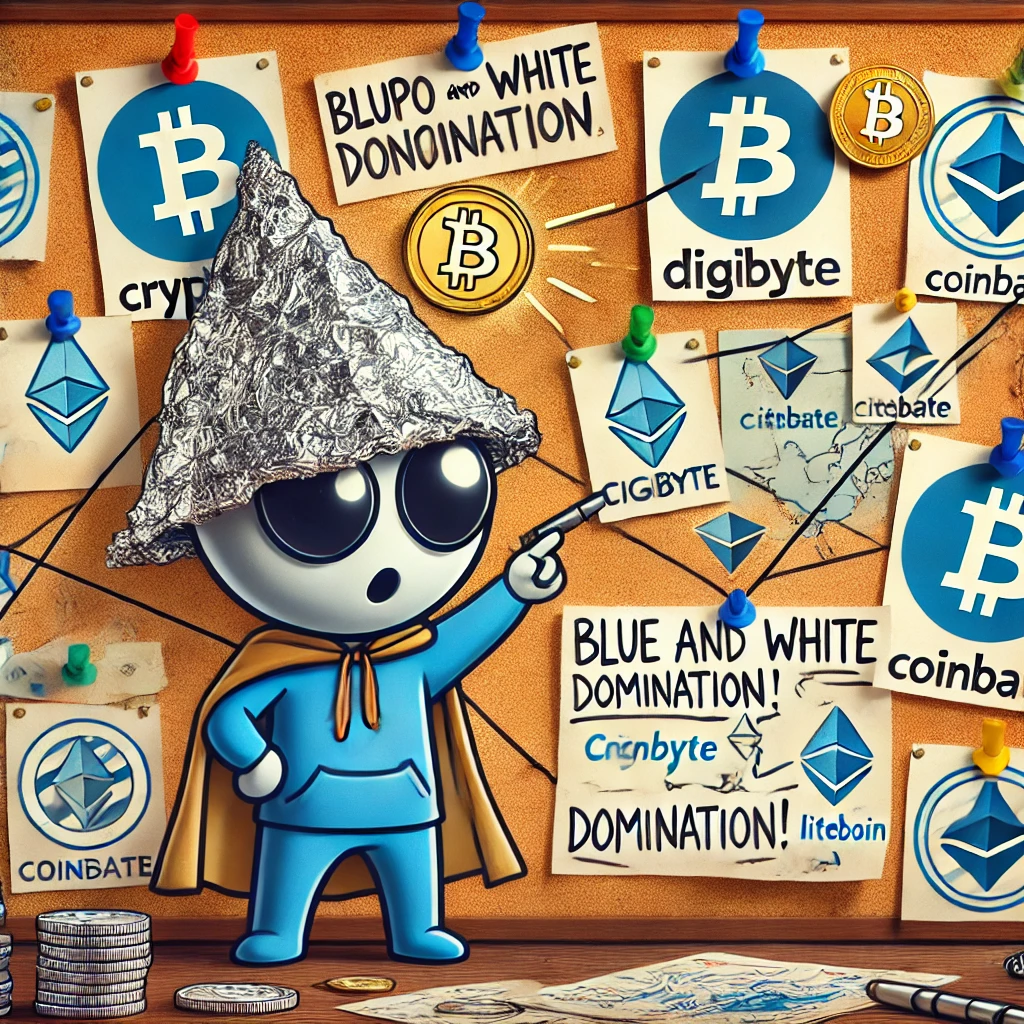Alright, buckle up, crypto enthusiasts. It’s time to dive into one of the strangest trends in the blockchain universe—the baffling dominance of the colors blue and white. From the logos of Crypto.com to DigiByte, Coinbase to Litecoin, and even El Salvador’s national Bitcoin branding, the crypto world seems to be drenched in shades of blue and white. But why? Coincidence, or something more mysterious? Let’s put on our tinfoil hats and unravel this chromatic conundrum.
The Players in the Blue-and-White Game
Let’s start with the suspects:
- Crypto.com – Their sleek blue logo, paired with a minimalist white, screams corporate trust and futuristic vibes. It’s the Apple aesthetic of the crypto world.
- DigiByte – A blockchain that’s all about innovation and speed, wrapped up in a clean blue and white package that says, “We’re cooler than the rest.”
- Coinbase – The blue that’s all business and a white backdrop that screams, “Don’t worry, we’re not sketchy—we’re regulated!”
- Litecoin – A pale blue that’s almost silver, accented with white to underline its “Lite” philosophy. Fast, secure, and dressed like a blockchain superhero.
- El Salvador’s Bitcoin branding – The country that went all-in on Bitcoin? Their national campaign is framed with—you guessed it—blue and white. Sure, it matches their flag, but still…
And the list goes on. Binance might splash some yellow and black to mix things up, but when it comes to widespread crypto branding? Blue and white reign supreme.
The Psychology of Blue and White
Maybe there’s some subliminal magic at play here. Blue is often associated with trust, reliability, and security—qualities you’d desperately want in a financial system built on complex math and cryptography. White, on the other hand, symbolizes purity and transparency. Together, they create a palette that says, “Don’t worry, your money is safe here.”
But is it really about psychology? Or is there something…deeper? Could this color scheme be a signal? A secret handshake in the blockchain world? Or a nod to some shadowy cabal pulling the strings behind the scenes?
The Blue-and-White Cabal
Let’s indulge in some juicy speculation. What if the dominance of blue and white isn’t just a coincidence? What if these colors are the hallmarks of an underground alliance shaping the future of finance?
Consider this: blue and white are the colors of the United Nations. They’re also the colors of major corporate players in finance and tech. Could this be a subtle way of signaling allegiance to a globalist agenda? A way of saying, “We’re part of the club” without saying it outright?
Or maybe—and here’s where it gets wild—the blue-and-white phenomenon is rooted in some ancient symbolism. The color blue has long been associated with the heavens, clarity, and truth. White is purity and perfection. Together, they’re like the yin and yang of blockchain branding—a balance of innovation and stability.
The Outliers
Of course, there are always outliers. Ethereum’s bold use of purple, Binance’s striking yellow and black, and Dogecoin’s…well, dog. These rebels of the color wheel stand apart from the blue-and-white crowd. But are they really rebels, or just diversions? Could they be part of a larger plan to keep us from noticing the blue-and-white nexus?
What Does It All Mean?
Here’s the thing: in a world as chaotic and innovative as crypto, trends don’t happen by accident. Blue and white might seem innocuous, but their ubiquity is impossible to ignore. Whether it’s about psychology, branding, or a grand conspiracy, one thing is clear: these colors are shaping the way we see the crypto world.
So, next time you’re scrolling through the endless sea of crypto logos, take a closer look. Ask yourself: is this just good branding, or is it a sign of something bigger? Because in the blockchain universe, nothing—not even a color scheme—is as simple as it seems.
